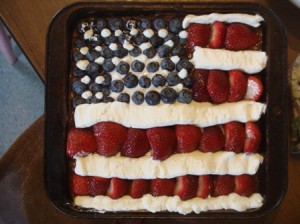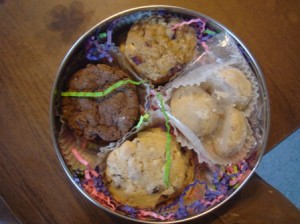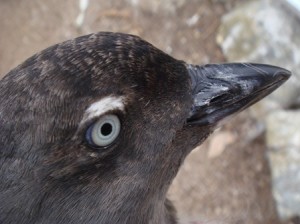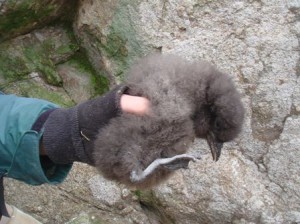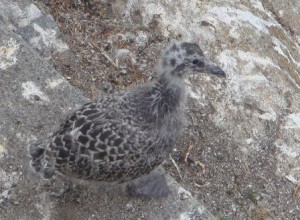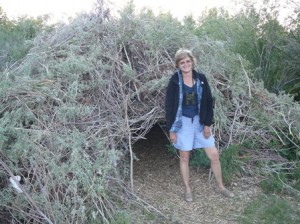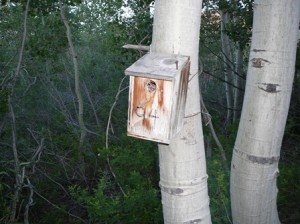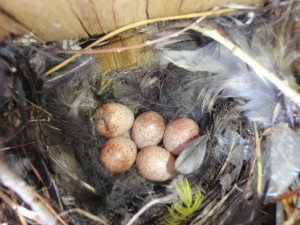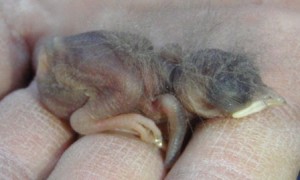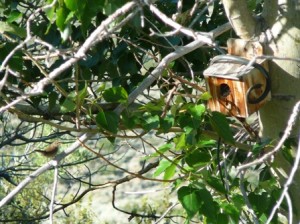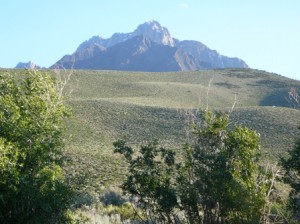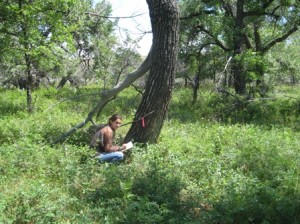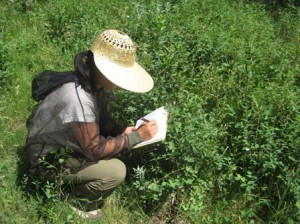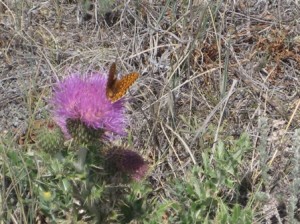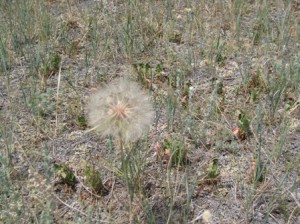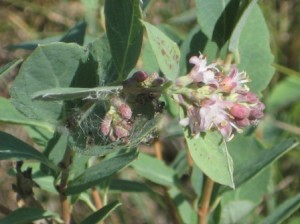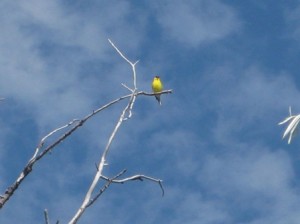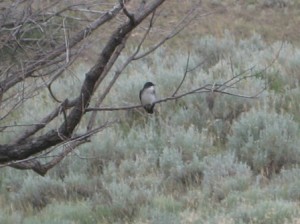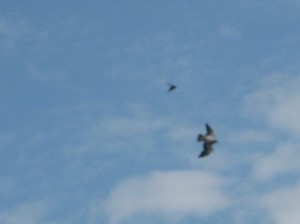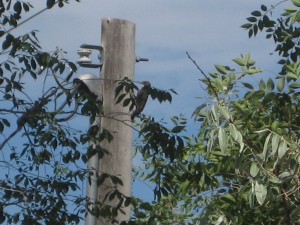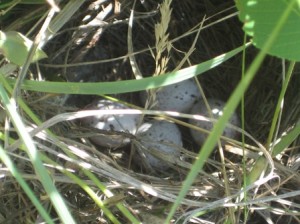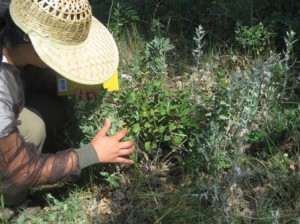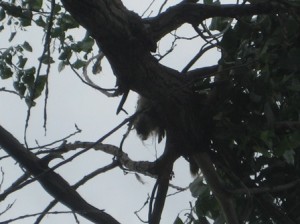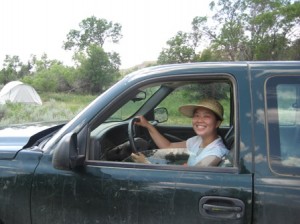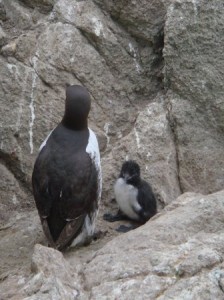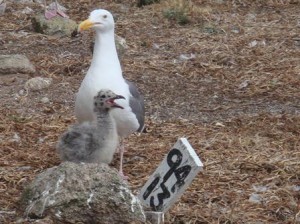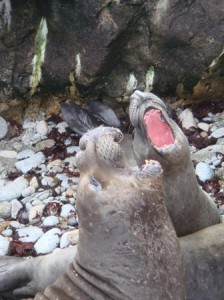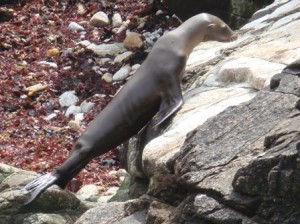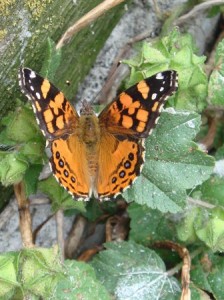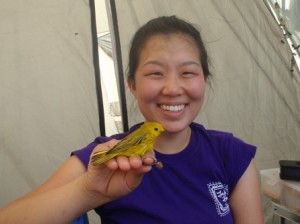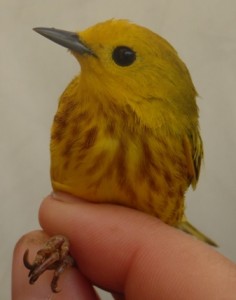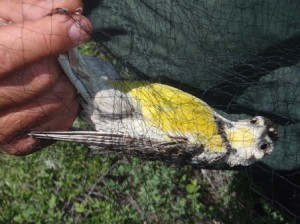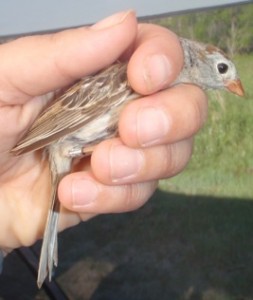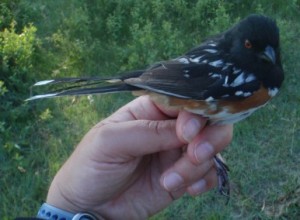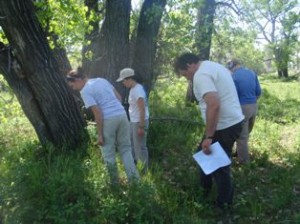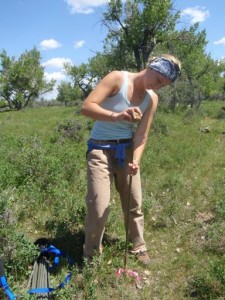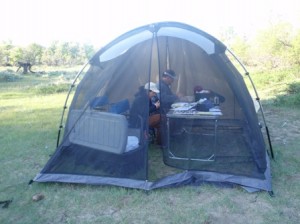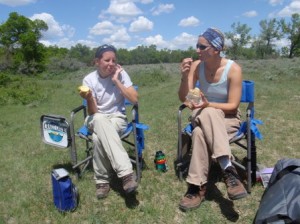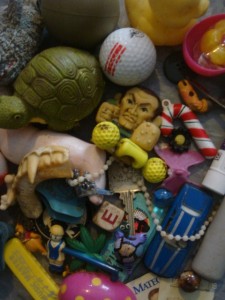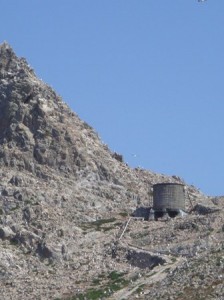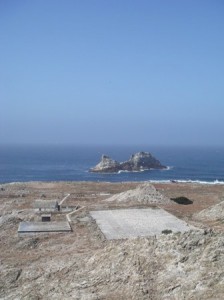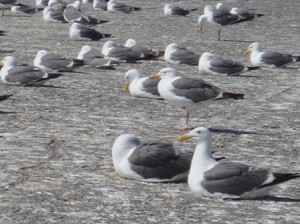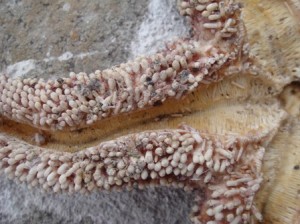So last night, to celebrate not having night work for the first time in four nights, we decided to watch Alfred Hitchcock’s “The Birds.”
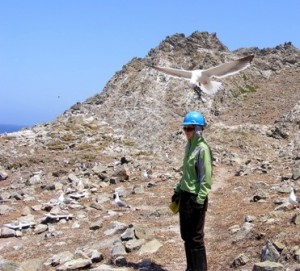
Me Being Attacked by a Gull
All I have to say is, it was really not scary. In fact, I have personally been through most of the things that happen in that movie (albeit, I haven’t had my eyes pecked out by a gull), but lines such as “a gull would NEVER attack a person on purpose, with malice!” were just laughable. In fact, here’s a pretty cool picture of me only seconds away from being pecked in the head really hard.
Not that “The Birds” isn’t a classic, it certainly is. But the fear factor kind of diminishes when all the scary things in that movie happen to you on a daily basis 🙂
Well, the reason I’ve experienced most of those attacks in the last few days is that we’ve been doing “saturation banding” of chicks in the gull study plots on the island. Normally, within the study plots, we only concern ourselves with chicks of known-age parents, that is, chicks of gulls who have been banded in the past. However, during saturation banding, it’s different.
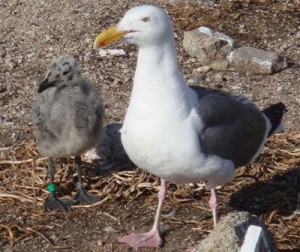
Newly-Banded Gull Chick!
During saturation banding, our objectives are twofold. One, use up the extra bands that were ordered this year and weren’t used to band chicks of known-age parents. Two, create more known-age birds; after all, we know how old all the chicks this year are! To saturate, we visit the study plots on the island and band every chick we can find–since gulls often return to sites very near where they were born in order to breed, it’s likely that saturation banding will result in higher numbers of known age birds within the plots in the future. Excellent!
Banding gull chicks is not as innocuous as it sounds. Most of the chicks are pretty big, and can run a great distance, so you can’t just sneak up on them. In addition, it’s good to not let them run too far, because they might run into the territory of another gull, and if that happens, they most likely will get pecked to death. To avoid this as much as possible, we employ the following technique: when a chick is spotted, use a couple of people to corner it, and, when close enough, throw a wadded up towel at it. Ideally, the towel will cover the chick, but most often, it just knocks them over. While they’re down, you have to leap at the chick and pin it down, getting its head under the towel as quickly as possible. This calms the chick down, and also ensures the maximum number of bruises on us humans, but it’s actually pretty fun. Then, you band the bird! Gulls are each banded with a metal band, which has a unique number on it, so we can identify the individual bird. In addition, they receive a color band, which identifies their cohort, or year they were born. This year’s combination is one metal band on the left and one green color band on the right (as you can see in the picture). I’m not sure how many gull chicks we banded in total, but it ended up being about six hours of work total.
Other than the saturation banding, the last couple of days have been pretty relaxed. I’ve been filling time by repainting a bunch of site numbers for pigeon guillemots up on Lighthouse Hill (which took up two whole mornings) and by helping Meghan to mend mistnets (I’m finally getting the hang of this delicate work). In fact, the last couple of days have been so relaxed that I got to take my first and only break from the island! Just kidding, but kind of. Let me explain.
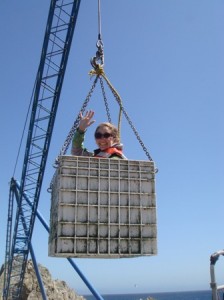
Me in the Box! Au Revoir!
Today was the day for some maintenance on the crane, so we greased up all the cables and gears and such. After greasing the crane, you have to “exercise” it, or run it in and out a few times to spread the grease around and rub out any chunks or things that might interfere with the crane operation.
To exercise the crane, we hook a box to it, put a person in the box, and lift them on and off the island. I don’t get a break from the island like the other interns, so I got some time in the box.
Here you can see me, sitting in the box, just lifted up off the ground and ready for my vacation.
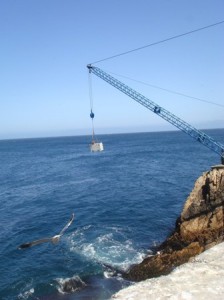
Me in the Box Again! But father away.
Here’s me way out in the box, hanging above the water. Hannah, who was operating the crane, did eventually end up putting me all the way down in the water (but the box is very seaworthy, I didn’t get wet), and then lifting me back up. Overall, it was a very relaxing experience, and the farthest I’ve been off the island since I got here. It might look scary and cramped, but really the motion was like being in a hammock, and the scenery was excellent. What a beautiful day today was!
Over the last few days, the wind has picked up a bit, but it cleared away all the clouds and fog, and we have excellent visibility and beautiful blue skies.
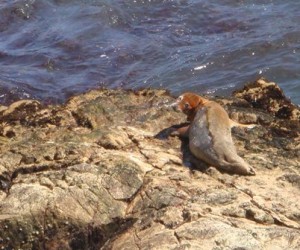
Red Phoca (Harbor Seal)
On a final note, just purely for interest, here’s a picture of a red pelage phoca, or Harbor Seal. The Harbor Seals are just one species of pinniped (seals and sea lions, etc.) found on the island, and they are usually a light gray color, almost white. However, those phoca that grow up in the San Francisco Bay turn this funky red color, from the diatoms that thrive in the water there. Over the last few days, I’ve been noticing this guy hanging around the East side of the island. One of his eyes is missing, and he’s in the process of molting, but you can still see his odd red color pretty clearly on his head.
Well, that’s all for now!
Best,
Eleanor






